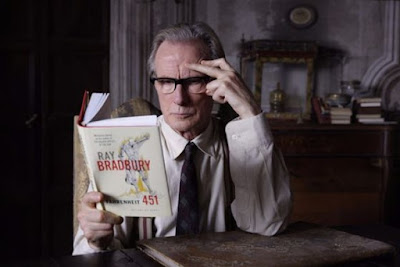- Crustless Spinach Quiche I have to admit I found this recipe because I didn't know what to do with leftover spinach. Turned out this was a tasty, filling dish that's easy to make and also great for diabetics or anyone cutting carbs.
- Easy Creamy Vegetable Soup I never made a creamy vegetable soup before, but this one is awesome and full of flavor. Made with carrots, potatoes, celery, and onion, you can fool your kids into eating their veggies with this. I recommend using a vegetable broth for better flavor.
- Rosół (Polish Chicken Soup) Many Polish recipes are passed down through generations. This one is the closest rosół (pronounced roh-sue) to the one made in my family. How my recipe differs: 3 carrots chopped, 4-5 celery stalks chopped (in place of parsley root and celery root), and no leek or garlic. As for the onion, I slice each end and burn it (yes, burn it) in a pan before adding to the pot for flavor (it can be removed from the soup later). Make sure to serve with extra fine noodles.
- Slow-Cooker Split Pea Soup This pea soup recipe beats any you'll get out of a can. It's made with fresh ingredients and is a dump recipe, so there's a minimum of work involved. I recommend adding salt and pepper to taste once it's done to wake it up a bit.
- To-Die-For Hungarian Mushroom Soup I've mentioned this recipe in a past post, but it's so good and easy, it's worth mentioning again! This is definitely the recipe for mushroom lovers. For a more intense mushroom taste, mix white and cremini mushrooms. This soup is perfect for a chilly fall day!
Saturday, September 27, 2025
Four Soups and a Quiche
Thursday, September 4, 2025
A Kindergarten Refresher
The new school year has started. Some are continuing their studies, others are at the very beginning of a long road of formal education. Of course, however, we learn throughout our lives, both in and out of the classroom, academic subjects and life skills.
Years ago, there was a book that resonated with many called All I Really Need to Know I Learned in Kindergarten, written by Robert Fulghum (available as an audiobook on Libby). Although it was first published in 1986, there are simple lessons that can be applied not only to kindergarteners, but to all of us. And at a time when it seems like we're surrounded by a lack of respect, courtesy, and kindness, I think it's worth taking a look at some of the kindergarten lessons Fulghum thought are important to remember:
- Share everything.
- Play fair.
- Don't hit people.
- Put things back where you found them.
- Clean up your own mess.
- Don't take things that aren't yours.
- Say you're sorry when you hurt somebody.
- Wash your hands before you eat.
- Flush.
Thursday, August 21, 2025
The Return of the Cassette?
When was the last time you saw cassettes in the library? For me, it was probably around 10 years ago, and the few we had were books on cassette or language learning cassettes. Since then, they have been removed from our collection because they rarely got checked out, and most people told us they didn't have cassette players anymore. Could that soon change?
If you or someone you know is a Swiftie (fan of megastar singer Taylor Swift), you might decide to buy her next album on cassette. No, I'm not kidding. Swift's next album, Life of a Showgirl, will be released in October on streaming, CD, vinyl, and...cassette.
For decades, "records" (a.k.a. "vinyls") were the primary format for audio recordings, but they had their limitations--they scratched easily and weren't very portable. Cassette tapes came out in the 1960s and became popular with the public in the 1970s through 1980s because you could take them anywhere (think 1980s "boom boxes" and car tape players). As a teenager, I played the cast album of The Phantom of the Opera endlessly (okay, I was a weird kid).
So why the heck is Taylor Swift releasing her latest album on cassette, of all formats? Apparently, Gen Z want to connect with their favorite singers more closely through something old school and tangible. Cassettes are also different from streaming in that you need to listen to an entire side rather than skip from one song to another (technically, you can fast forward to the next song, but it's not so easy to find its starting point).
Will the library be buying cassettes again? I doubt it. As someone who grew up with cassettes in the '80s, give me a clean-sounding CD I can play in my car and skip to any song I want.
Do you want to see the return of the cassette? Why or why not? Share with us!
Ever truly yours from the perch.
(Photo Source: BRRT on Pixabay)
Wednesday, July 9, 2025
"Superman" Returns?
There's hype about Superman, the latest movie in the Superman franchise coming out this week. You may recall that I'm a big Superman fan, so I'm interested in this new take on the iconic superhero. Although I've enjoyed portrayals of the Man of Steel by different actors, Christopher Reeve's portrayal will always be the most quintessential to me and others.
Thursday, June 26, 2025
If You Want Your Kids to Read...
Tuesday, June 17, 2025
What I've Been Reading (and Liked!)
- The Women (Kristin Hannah) An excellent read, but not a light one. Vietnam Vets we're given anything but a hero's welcome returning home, but many Americans, including male veterans, denied that there were women serving in Vietnam as nurses and in other capacities. This book presents the horrors of the Vietnam War and the toll of PTSD along with the government's failure to support its female recruits.
- Before the Coffee Gets Cold (Toshikazu Kawaguchi) This is a different kind of time travel book. In a Tokyo cafe, a person can travel back (or forward) in time to meet someone, but whatever the person says or does will not change the course of events. It's interesting to see why someone wants to visit a certain time and with whom. Often, the time traveler ultimately finds some kind of closure and peace.
- The Boxcar Librarian (Brianna Labuskes) Big surprise, I enjoy reading books about libraries and librarians; I also enjoy historical fiction. This book, based on a true story, focuses on a Missoula librarian in the 1920s who has the idea of turning a train's boxcar into a library that travels to various mining camps around Montana.
Thursday, May 29, 2025
It's Time for Summer Reading Again!
Wednesday, May 21, 2025
Put Some "Njuta" in Your Life
Wednesday, April 30, 2025
Books: Portals to Other Worlds
- Outlander (Diana Gabaldon) Like historical fiction? Like time travel? How about a sprinkling of romance? Then this series about a time traveling World War II nurse who finds love in 1700s Scotland is for you.
- The Dark Tower (Stephen King) In post-apocalyptic Mid-World, the last gunslinger tries to save the powerful and magical Dark Tower, the heart of all worlds, from someone or something trying to destroy it.
- The Chronicles of Narnia (C.S. Lewis) During World War II, four siblings sent to shelter from London's air raids in the countryside enter a magical world where animals talk. And there's a witch and other villains just to make things more interesting.
- A Court of Thorns and Roses (Sarah J. Maas) Power, courts, and romance, oh my! Read what happens when a huntress unknowingly kills a wolf in a faerie realm and finds evil (and love) lurking in the land.
- Game of Thrones (George R.R. Martin) A number of noble houses in Westeros fight for the Iron Throne and the power it yields, while other houses seek independence from it. There are wars, alliances, betrayals, and more.
- Percy Jackson and the Olympians (Rick Riordan) Great for mythology lovers. Percy, a demigod, tries to prevent a war among Greek gods in the 21st century.
- Harry Potter (J.K. Rowling) An orphan boy discovers he's a wizard and goes to a school for magic while an evil wizard tries to kill him.
- The Lord of the Rings (J.R.R. Tolkien) A small hobbit in Middle Earth journeys to a forbidding land to destroy an enchanted ring before a dark lord wields power and destroys all that is good. Be sure to read Tolkien's The Hobbit first.
Wednesday, April 9, 2025
Making Friends
Tuesday, March 25, 2025
A Thought On Libraries
"Without libraries, what do we have? We have no past and no future."
Ray Bradbury (1920-2012)
American Author and Screenwriter















